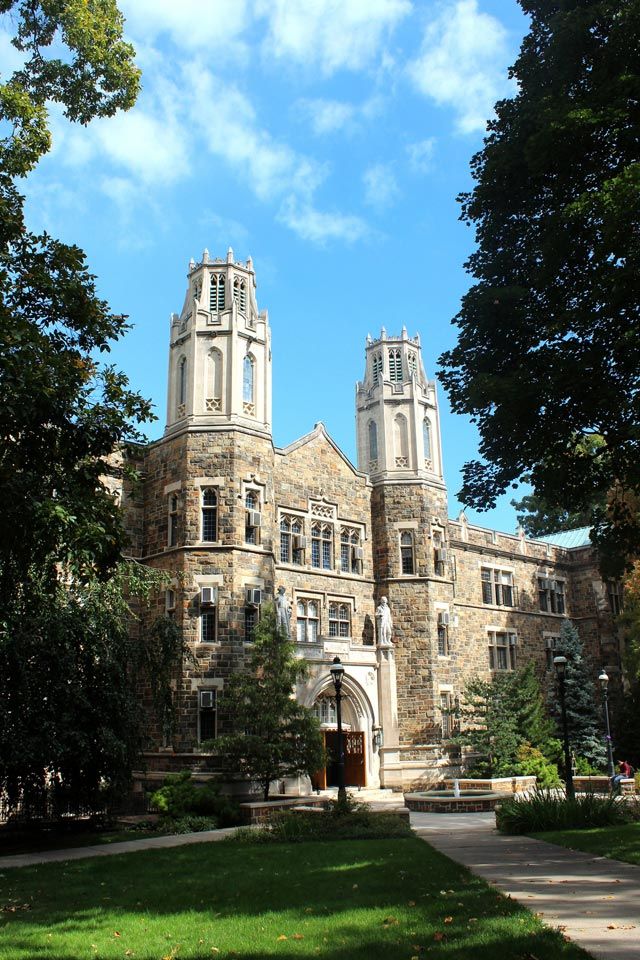The main lobby of Lehigh's historic Packard Laboratory is being renovated to serve as a destination point for students and visitors. New features include a media wall, a collaborative learning space and an environmentally controlled glass case for the 1899 Model A-1, the first car ever built by the Packard Motor Car Co.
Other features of the venerable building and its history:
-
Packard Lab was constructed in 1930 of steel and native Pennsylvania sandstone and trimmed with Indiana limestone. Its architects, Lehigh alumni Theodore Visscher (1899) and James Burley (1894), also designed Lehigh’s Alumni Memorial Building, Chandler-Ullmann Laboratory and Grace Hall.
-
The building originally contained a 223-by-63 foot, three-story-tall lab space, with a floor that could withstand 400 pounds per square foot of pressure and with spacious observation balconies that could accommodate smaller projects and light machinery. This space was replaced in 1976 with lab and office space.
-
Statues of Michael Faraday and James Watt preside over the main entrance, symbolizing the building’s original dedication to electrical and mechanical engineering.
-
Until recently, Packard’s classrooms were locked by professors immediately after the bell sounded to begin class. For several generations, tardy students signaled sympathetic peers with a “secret knock” to open the door and allow them entry at an opportune moment.
-
Today, Packard is home to the P.C. Rossin College of Engineering and Applied Science and its departments of electrical and computer engineering, mechanical engineering and mechanics, and computer science and engineering.

